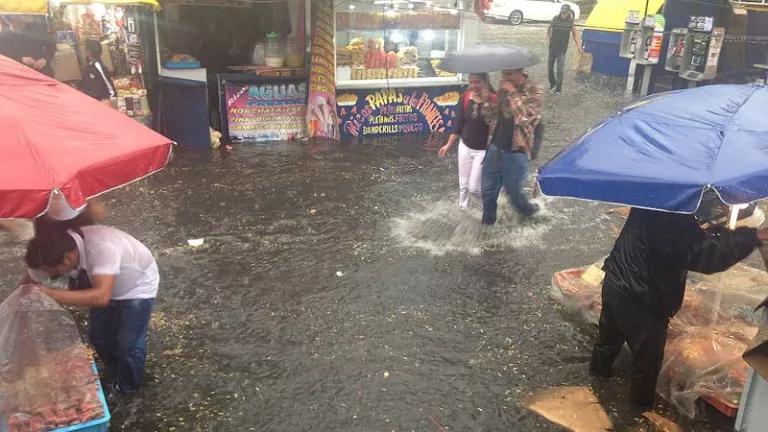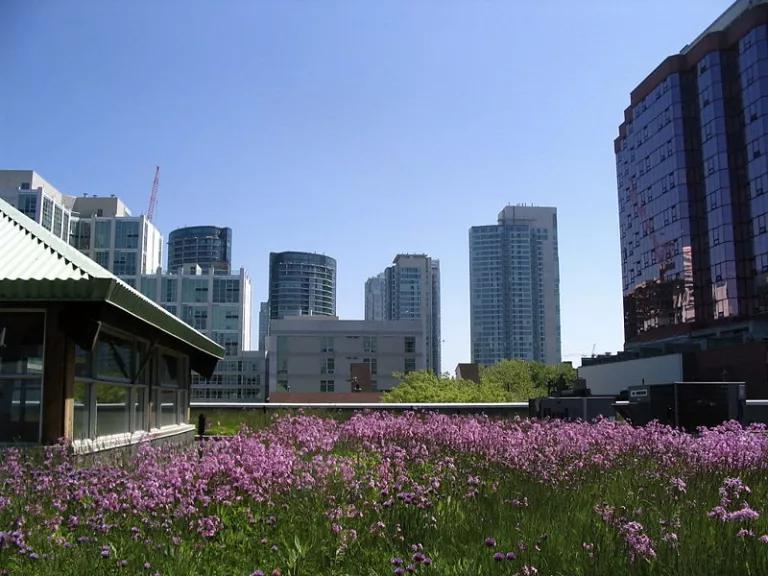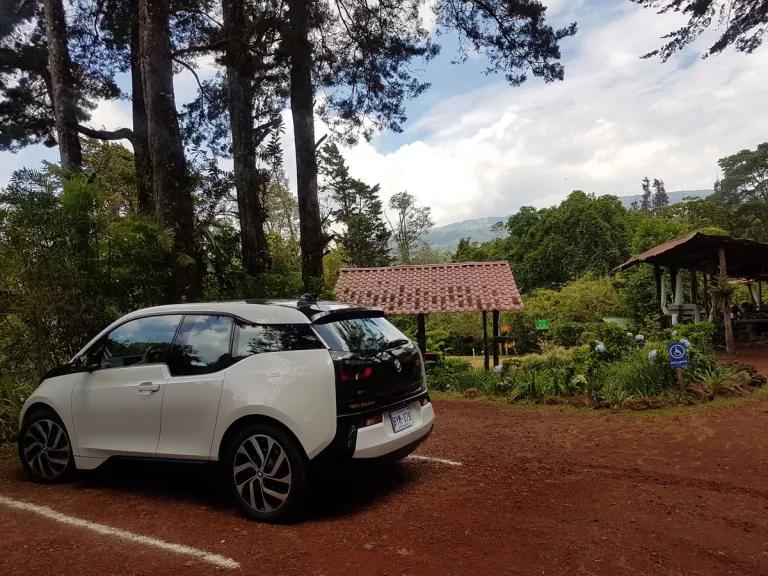Building Resilience Through Transportation & Infrastructure

This blog post was co-authored with Andrea Becerra
For World Cities Day 2018, we celebrate the important role of transportation and green infrastructure solutions to fight climate change and build more resilient and vibrant cities in Latin America.
Cities are some of the most vulnerable regions to climate change as well as some of the largest emitters of carbon dioxide (CO2). Latin American cities in particular are at the epicenter of climate change. From extreme heat and air pollution in Mexico City and Santiago, Chile to sea-level rise along Central America’s coast, cities in Latin America are already reeling from some of the immediate effects of a changing climate. And while Latin American cities are not the top emitters of global greenhouse gas (GHG) emissions, as their economies and populations continue to grow the demand to meet energy needs will continue to rise. The way in which Latin American cities continue to build and expand will be vital for meeting both adaptation and mitigation targets.
The theme of World Cities Day is “Better Cities, Better Lives.” Transportation and green infrastructure are two key solutions that can help reduce GHG emissions and contribute to resilience and overall well-being in the face of a changing climate. According to a recent study at the Norwegian University of Science and Technology “roughly one third of an urban resident’s footprint is determined by that city’s public transportation options and building infrastructure.” Moreover, climate actions in the form of green infrastructure and clean transportation aren’t just better for the planet—they clean our air and filter our water, create new jobs, and improve quality of life.
In many ways Latin America is already moving towards building better cities and better lives. Costa Rica recently unveiled plans to introduce an electric train, while a new technology called i-Tree Eco in Mexican cities helps monetize the ecosystem services of a single tree to effectively include them in urban city planning decisions. However, Latin Americans still spend too many hours in traffic and green spaces are severely lacking as the region continues to urbanize.
Mitigating extreme heat and managing drought and floods through green infrastructure
In order to accommodate a growing population, cities replace natural landscapes with paved roads, residential buildings, and commercial centers. Typical roofs and pavements make cities two to ten degrees warmer, contributing to the urban “heat island effect.” Impermeable city streets leave little room for flood waters to exit during storms, and impervious surfaces decrease the rate of groundwater recharge.
Green infrastructure capitalizes on nature’s ability to clean air, alleviate floods, filter water, and mitigate excessive heat. It can come in many forms and scales, ranging from green roofs and permeable parking lots to land conservation. In drought- and flood-prone regions like Santiago and Mexico City, green infrastructure can serve the dual-purpose of alleviating flood damage while also replenishing receding groundwater supplies. Unlike pavement, forests and permeable parking lots retain water and slow runoff, reducing flood peaks. At the same time, water that is not lost as surface runoff can infiltrate soils and porous pavement, enhancing groundwater recharge.
Cities in Latin America are already grappling with the hottest temperatures on record. The Intergovernmental Panel on Climate Change (IPPC) predicts additional climate-induced stress on already-threatened freshwater resources in places like Chile and Western Argentina. Green infrastructure can make cities healthier, cleaner, cooler in the summer, and more beautiful. A recent study documented an improvement in mental health in parts of Pennsylvania where vacant urban lots were converted to green space. Green infrastructure also helps purify the surrounding air. This is particularly important in cities like Lima and San Salvador where particulate matter pollution levels contributes to some of the most toxic air in the Americas. In addition, water filtration through green infrastructure can bring down greenhouse gas emissions from pumping and wastewater treatment.

Green roofs like the one pictured here in Toronto, Canada, can improve air quality, reduce the volume of stormwater runoff, and help bring down energy costs (and GHG emissions) associated with building cooling. While success varies, some studies have calculated that green roofs can reduce energy use by upwards of 50 percent.
Healthier cities through cleaner transportation
More than 80 percent of Latin Americans live in cities, one of the highest rates of urbanization in the world. As a result, the demand for clean air, urban planning and providing clean, reliable and affordable transportation is on the rise. This has become increasingly urgent since the International Agency for Research on Cancer (IARC) called outdoor air pollution one of the leading environmental causes of cancer deaths. A similar announcement from 2012, confirmed that diesel engine exhaust is also a carcinogenic. According to recent data from UN Environment, air pollution kills almost 7 million people around the world. The situation could get worse in the next few years in Latin America as the transportation sector—a key source of air pollution—experiences accelerated growth. The region’s vehicle fleet is expanding faster than in other areas of the world and could triple over the next 25 years.
The good news is that by acting now Latin American countries can help make their cities more livable by cutting down on toxic air pollution from the transportation sector. To start, fuel quality and vehicle emissions regulations can help clean up polluting diesel engines. (Read more in NRDC’s Report Dumping Dirty Diesels in Latin America.) A shift toward electric mobility can also improve local air quality and help countries meet their emission reduction commitments under the Paris Agreement. According to a study by the UN Environment and the International Automobile Federation, if the current fleet of buses and taxis in 22 Latin American cities were replaced by electric vehicles, by 2030 almost $64 billion dollars in fuel would be saved, 300 million tons of CO2 would be reduced and 36,500 premature deaths would be prevented. Several countries and cities in the region are already moving forward with electric mobility initiatives. Costa Rica has passed a pioneering law to promote this clean technology. Chile is introducing 200 electric buses into the transportation system of Santiago. In Uruguay, the cities of Colonia and Punta del Este have now been linked with charging stations every 60 kilometers (approximately 37 miles). And in Colombia, Medellín is preparing to deploy 1,500 electric taxis by 2020, of which 500 will start operating this year.

The latest IPCC report highlights the urgency of addressing the impacts of climate change and slowing the rise of global temperatures. Transportation and green infrastructure initiatives can offer both near- and long-term benefits for “better cities, better lives.” The good news is that cities are hubs for innovation and urban residents are increasingly mobilized to act on climate change. While the road ahead presents numerous challenges, cities are most certainly up to the task.
This blog post was co-authored with Andrea Becerra who recently graduated from The Fletcher School at Tufts University with a Masters in International Environment and Resource Policy and Integrated Water Management. She is a consultant for NRDC focusing on urban and rural water management issues in Latin America.
